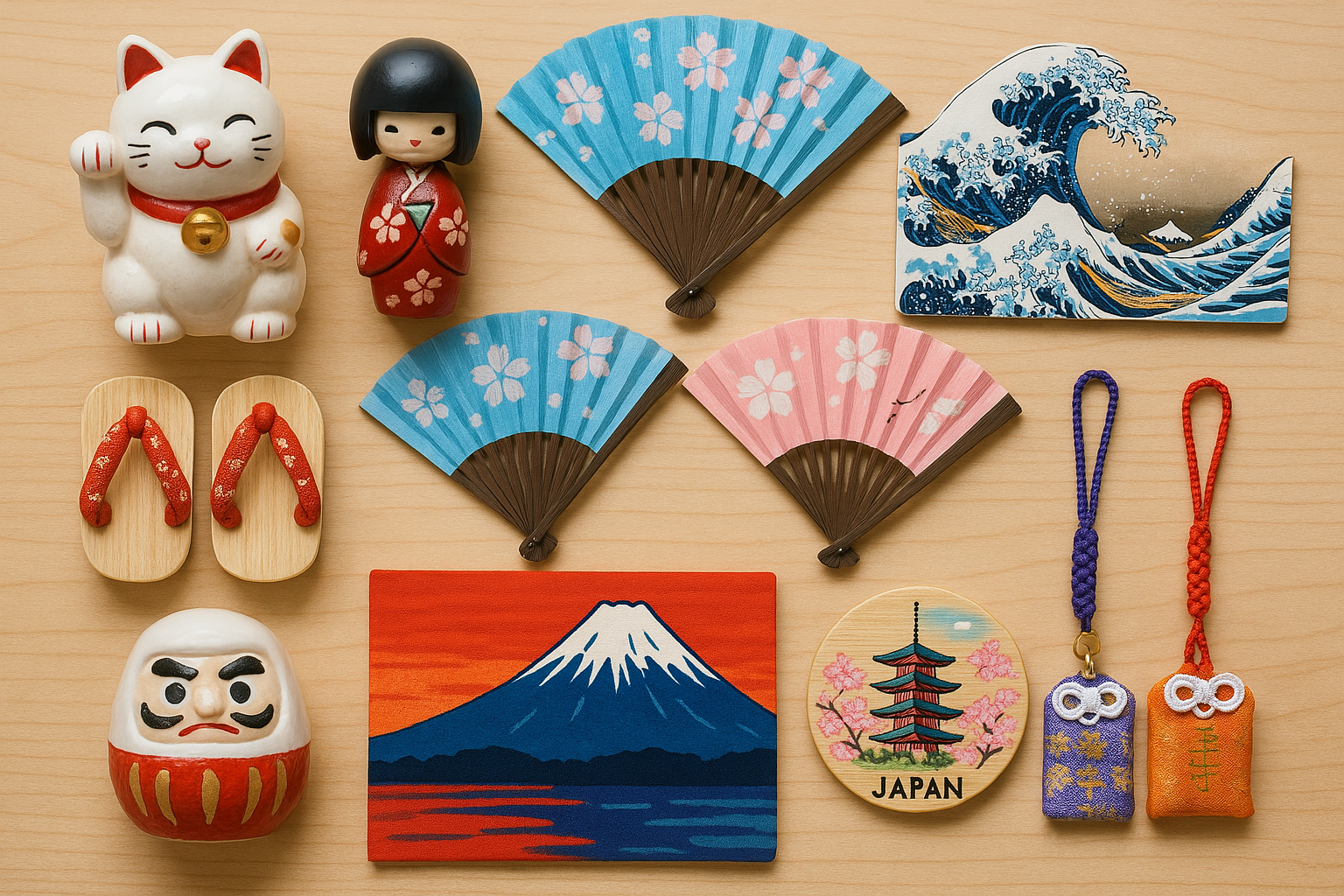Introduction to Japan for Foreign Tourists
Why Japan is a Must-Visit Destination
If you’re daydreaming about an exotic vacation with a perfect mix of culture, nature, and futuristic technology, Japan should be at the top of your list! Imagine this: you’re surrounded by neon-lit streets in Tokyo one moment, then transported to the serene, ancient temples of Kyoto the next. It’s like stepping into two worlds at once—where the past and future coexist harmoniously. From the bustling city vibes to tranquil gardens, Japan offers experiences for all types of travelers. And let’s not forget the food—sushi, ramen, tempura—oh my! It’s no wonder that tourists often leave Japan with a suitcase full of memories and a few extra pounds from all the delicious food.
Key Attractions and Experiences in Japan
Japan is packed with iconic attractions that will leave you in awe. You’ll want to get a selfie with Mount Fuji, Japan’s most famous mountain, whether you’re climbing it or admiring its snow-capped peak from afar. Tokyo, Japan’s neon-lit metropolis, offers everything from shopping districts like Shibuya and Harajuku to high-tech experiences like robot hotels. But if you’re after something more traditional, Kyoto is the place to be. Its ancient temples, shrines, and beautiful gardens will transport you back in time. Whether you’re a nature lover, tech enthusiast, or history buff, Japan has something to excite and captivate every type of traveler.
Exploring Japan’s Rich Culture
Traditional Japanese Arts and Crafts
Japan’s rich cultural heritage is woven into every corner of the country. It’s like stepping into a living museum. You can see the delicate art of the tea ceremony, where the simplest movements are infused with deep meaning. It’s all about mindfulness, elegance, and respect. Ever tried wearing a kimono? It’s like wearing history on your back—unbelievably beautiful, but also a tad tricky to move around in, especially if you’re a bit on the clumsy side, like I am. I once tried to wear a kimono at a festival and ended up walking like a penguin for half the day! But it was totally worth it because the feeling of wearing such a graceful piece of Japanese culture was unlike anything else.
Tea Ceremony: A Timeless Tradition
The Japanese tea ceremony is an experience that goes beyond just drinking tea—it’s a beautiful ritual that’s been practiced for centuries. Imagine sitting in a quiet room, surrounded by the soft rustle of tatami mats beneath you. The tea master gracefully prepares the matcha, whisking it with such precision and care that you can’t help but feel the peace of the moment. It’s not about rushing through, but about savoring the process, like savoring the first sip of your morning coffee. Every movement is deliberate, calming, and absolutely mesmerizing. When you participate, you’ll not only taste tea but also feel connected to a piece of history.
Kimono: The Elegance of Japanese Fashion
A trip to Japan wouldn’t be complete without trying on a kimono. Picture this: you’re walking down a quaint street in Kyoto, wearing a kimono, the fabric flowing gracefully around you. It feels like you’re the star of an old-time Japanese movie—minus the dramatic music (unless you’re in the mood to hum a theme song to yourself). Kimonos are more than just clothing; they’re a representation of Japanese tradition. They’re typically worn during special occasions, so when you put one on, you’re stepping into centuries of Japanese culture. While getting dressed in one might make you feel like you’re in a medieval knight’s armor (because of all the layers and tightness), it’s a beautiful, unforgettable experience.
Festivals and Cultural Celebrations
Japan’s festivals are an absolute highlight of the cultural calendar. Every region has its own celebration, and trust me, these festivals will make you want to put on your dancing shoes and jump right in. From the colorful, energetic atmosphere of the famous Gion Matsuri in Kyoto to the more tranquil beauty of the Obon Festival, there’s something magical about the way the entire country comes together to celebrate.
The Beauty of Cherry Blossom Festivals
The cherry blossom (sakura) season is one of Japan’s most celebrated times of the year. The beauty of the pink petals gently falling from the trees is a sight that feels almost surreal. There’s an old Japanese saying, “Iro wa nioedo, chiri yuku wa,” which translates to “Even the colorful flowers eventually fall,” symbolizing the fleeting nature of life. It’s this beautiful, poetic feeling that makes hanami (cherry blossom viewing) so special. Imagine gathering with friends under the blooming trees, enjoying picnics and feeling the spring air on your face. It’s a moment of pure joy that perfectly captures the Japanese love for nature’s ephemeral beauty.
Matsuri: Japan’s Colorful Regional Festivals
Japan’s matsuri (festivals) are like nothing you’ve ever experienced. Each region has its own festival, with some going back centuries! I’ll never forget the time I visited the Awa Odori festival in Tokushima. The streets were alive with people dancing, music playing, and everyone smiling. Whether it’s the high-energy dancing at the Awa Odori, the bright floats in the Nebuta Matsuri, or the fireworks at the Sumidagawa Fireworks Festival, Japan’s festivals bring people together like one big happy family. If you love vibrant cultures, this is definitely an experience that will get your heart racing.
Delicious Japanese Cuisine
Sushi: Japan’s Iconic Dish
Japan’s sushi is world-famous, but there’s a lot more to it than what you might have seen at your local sushi restaurant back home. Here, sushi is an art form. The fresh fish, the vinegared rice, and the perfect balance of flavors come together to create a sensory experience. And don’t even get me started on the variety! Whether you’re a fan of sashimi, nigiri, or maki rolls, there’s something for everyone. I’ll never forget my first sushi experience in Tsukiji Market. Watching the sushi chefs prepare each piece with such precision was like watching a master at work. It’s an experience you can’t miss—trust me, once you try sushi in Japan, you’ll wonder how you ever lived without it.
Types of Sushi You Must Try
So, what types of sushi should you try? Well, the classic nigiri (fish on rice) is a must, especially with fresh tuna, salmon, or yellowtail. But don’t overlook lesser-known options like uni (sea urchin) or anago (saltwater eel). For those feeling adventurous, there’s also the famous temaki (hand roll)—it’s like sushi on-the-go! And if you’re in Japan during the winter, look out for buri (winter yellowtail) sushi, which is rich and buttery, like nature’s version of comfort food.
Where to Find the Best Sushi
While Japan is filled with sushi spots, one of the best places to experience sushi is in Tokyo’s Tsukiji Outer Market or the high-end sushi joints in Ginza. However, the beauty of sushi is that it’s not always about the fancy places—sometimes, the little hole-in-the-wall spots offer the freshest and most delicious sushi. Wherever you go, just make sure to ask for the omakase (chef’s choice), and you’ll be in for a treat.
Ramen: A Japanese Culinary Delight
Ramen is another Japanese dish that has taken the world by storm, but in Japan, it’s elevated to a whole new level. Forget about instant noodles—real ramen is rich, flavorful, and totally satisfying. In Japan, ramen isn’t just food; it’s a cultural experience. From the creamy tonkotsu broth in Fukuoka to the soy-based shoyu ramen in Tokyo, each region has its own version. And the best part? There are ramen shops everywhere, with their bright signs calling out to you like a siren song, promising warm, hearty bowls of joy.
Ramen Varieties Across Japan
Each region in Japan has its own unique style of ramen. For example, Hokkaido is famous for miso ramen, with its rich and hearty broth. In Kyoto, you’ll find a more delicate, clear-based ramen, while in Hakata (Fukuoka), the tonkotsu ramen is a creamy, pork-bone-based broth that’s simply to die for. If you’re ever in Sapporo, you’ve got to try the miso ramen, which pairs perfectly with the chilly winter air. No matter where you go, there’s always a local ramen shop waiting to serve up something mouth-watering.
Best Places to Enjoy Ramen
I’ll never forget my first ramen experience in Hakata, where I slurped down a steaming bowl of tonkotsu ramen so quickly I almost burned my mouth! It was worth it though. Ramen shops in major cities like Tokyo, Osaka, and Fukuoka are renowned, but don’t forget about the smaller, hidden gems. The best ramen spots often have long lines, and trust me, it’s always worth the wait. Be sure to check out a local ramen guide or ask your friendly neighborhood Japanese guide (me!) for the best places to go.
Stunning Natural Beauty in Japan
Mount Fuji: Japan’s Sacred Mountain
Mount Fuji is more than just a mountain—it’s a national symbol and a UNESCO World Heritage site. Picture this: you’re standing at the base of this majestic volcano, the tallest mountain in Japan, with its snow-capped peak looming above. It’s one of those experiences where you just have to stop and take a moment to appreciate the beauty around you. Whether you’re a serious climber or just someone who loves a good view, Mount Fuji will take your breath away.
Hiking Mount Fuji: What You Need to Know
For the adventurous, hiking Mount Fuji is a bucket-list item, but there are a few things to keep in mind before you take on the challenge. The official climbing season is from July to September, so if you’re thinking of summiting, plan accordingly. The trail can be a bit tough, especially near the summit, but the sense of accomplishment when you reach the top is worth every step. If hiking isn’t your thing, don’t worry! You can still enjoy breathtaking views of the mountain from surrounding areas like Lake Kawaguchi.
The View of Mount Fuji: Best Viewing Spots
If hiking isn’t on your agenda, there are plenty of spots to see Mount Fuji without breaking a sweat. Lake Kawaguchi, just a short drive from the mountain, offers some of the best views, especially at sunrise when the mountain is reflected in the calm waters. Another great spot is the Chureito Pagoda, located near Fujiyoshida, where you can capture that perfect photo of Mount Fuji framed by the iconic pagoda. It’s the kind of view you’ll never forget.
Japan’s Beautiful Islands and Beaches
Japan isn’t all about neon lights and city streets; it’s also home to stunning islands and serene beaches that are perfect for unwinding. Okinawa, Japan’s tropical paradise, offers crystal-clear waters, white sandy beaches, and an incredibly laid-back vibe. It’s the perfect place to relax and soak up the sun, with a dash of history and culture thrown in. I had the chance to visit Okinawa once, and let me tell you, it’s like a mini-vacation within a vacation.
Okinawa: The Tropical Paradise
Okinawa feels like stepping into another world. The island is known for its warm, tropical climate and a slower pace of life that’s ideal for those who need a little downtime after sightseeing in Japan’s bustling cities. Whether you’re snorkeling in its turquoise waters or exploring the ancient Shurijo Castle, Okinawa is a place to refresh both your body and soul. The food is also incredible—try some Okinawa soba or go for a refreshing glass of awamori (local rice liquor). It’s one of those places where time seems to slow down, and you can really take a deep breath.
The Remote Islands of Japan
Beyond Okinawa, Japan has many smaller islands that are just as breathtaking. The Ogasawara Islands, often called the “Galapagos of the East,” offer pristine nature and rare wildlife. These islands are remote, so getting there requires a boat ride from Tokyo, but the isolation makes them feel like paradise. Whether you’re into scuba diving, exploring caves, or just enjoying the peace and quiet, Japan’s islands offer plenty of opportunities to get away from it all.






コメント